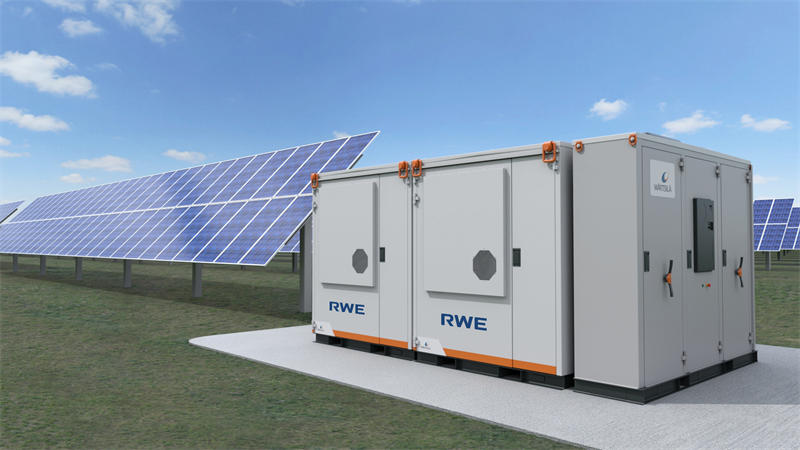
The global energy landscape is undergoing a transformative shift towards sustainability and renewable energy sources. As the world strives to reduce its reliance on fossil fuels and decrease greenhouse gas emissions, the integration of renewable energy, such as wind and solar power, has become a top priority. However, one of the significant challenges in this transition is the intermittent nature of these energy sources. The sun doesn’t always shine, and the wind doesn’t always blow. This variability creates a need for effective energy storage solutions to ensure a stable and reliable power supply. In this article, we explore the vital role of energy storage solutions in the evolving energy sector, with a focus on various technologies and their applications.
The Importance of Energy Storage
Energy storage plays a pivotal role in achieving a sustainable and resilient energy infrastructure. It serves several critical purposes:
1. Grid Stabilization: Energy storage helps balance the supply and demand of electricity on the grid. During periods of excess generation (e.g., a sunny day with high solar power output), surplus energy can be stored and released when needed. This reduces grid instability and minimizes the need for expensive peaker plants that run during periods of high demand.
2. Integration of Renewable Energy: Renewable energy sources, such as wind and solar, are inherently intermittent. Energy storage systems enable the capture and storage of excess energy when it’s available, ensuring a consistent power supply even when the primary sources are not producing.
Also read: Things To Be Considered While Choosing The Best Hotel
3. Resilience and Reliability: Energy storage can provide backup power during grid outages, enhancing energy security and ensuring critical services remain operational. This is particularly important in regions prone to extreme weather events.
4. Load Shifting: Energy storage allows consumers to store electricity during low-demand periods when energy is cheaper and use it during high-demand periods when energy prices are typically higher. This helps reduce energy costs for businesses and homeowners.
5. Electrification of Transportation: Energy storage is a key component of electric vehicles (EVs). It enables EVs to store and release electricity, making them an environmentally friendly alternative to internal combustion engine vehicles.
Now, let’s delve into the various energy storage technologies and their potential applications in Canada and around the world.
Aslo read: “How to Make Real Estate Your BFF: A Guide to Finding Your Niche and Rocking’ the Market”
Battery Energy Storage Systems (BESS)
BESS is one of the most well-known and widely used energy storage technologies. It stores electricity in chemical form, making it a versatile and scalable solution. Lithium-ion batteries, in particular, have become the dominant technology in this category due to their high energy density and efficiency. BESS has several applications:

1. Grid-Scale Energy Storage: Large battery installations can be used to store excess energy from renewable sources, such as wind and solar farms, and release it during periods of high demand. This supports the integration of renewable energy into the grid.
2. Microgrids: Battery storage can create microgrids that provide localized, reliable power. These microgrids are valuable in remote or off-grid areas, such as Canada’s northern regions, where a stable energy supply is crucial.
3. Residential and Commercial Use: Homeowners and businesses can install battery systems to store excess energy generated by solar panels. This energy can be used during the evening or on cloudy days, reducing reliance on the grid.
4. Electric Vehicles (EVs): Lithium-ion batteries are the heart of electric vehicles, enabling them to store and release energy to power the vehicle’s electric motor. EV adoption is growing rapidly in Canada and worldwide.
Flywheel Energy Storage
Flywheel energy storage systems store energy in the form of kinetic energy. These systems consist of a spinning mass (the flywheel) that stores energy in its rotational motion. When energy is needed, the flywheel’s kinetic energy is converted back into electricity. Flywheels have unique characteristics:
1. Rapid Response: Flywheels can discharge energy almost instantaneously, making them ideal for applications that require quick bursts of power, such as grid stabilization during sudden load changes.
2. Long Operational Life: Unlike some other energy storage technologies, flywheels have a long operational life with minimal degradation over time, reducing maintenance costs.
3. Frequency Regulation: They are well-suited for frequency regulation on the grid, ensuring that the grid operates at a consistent frequency.
Also read: The Benefits Of Turning To An Estate Agent To Find Your Dream Property
Pumped Hydro Storage
Pumped hydro storage is one of the oldest and most established energy storage methods. It involves two water reservoirs at different elevations. During periods of excess electricity generation, water is pumped from the lower reservoir to the upper reservoir. When electricity is needed, the water is released from the upper reservoir to the lower reservoir, passing through turbines to generate electricity. Pumped hydro storage has several advantages:

1. High Efficiency: It boasts one of the highest energy conversion efficiencies of all energy storage technologies, typically around 70-80%.
2. Large-Scale Capacity: Pumped hydro storage facilities can store vast amounts of energy, making them suitable for grid-scale energy storage.
3. Grid Balancing: They play a crucial role in balancing the grid by providing rapid-response energy generation.
Thermal Energy Storage
Thermal energy storage systems store energy in the form of heat. They typically use materials like molten salt or phase-change materials that can absorb and release heat. There are two main types of thermal energy storage:
1. Sensible Heat Storage: In this type, the storage medium’s temperature changes as it stores and releases heat. Sensible heat storage is used in applications like solar thermal power plants and district heating.
2. Latent Heat Storage: This type involves phase-change materials that store and release energy as they change from solid to liquid or vice versa. Latent heat storage is used in applications such as building heating and cooling systems.
Thermal energy storage is particularly valuable in regions with distinct temperature variations, as it can capture excess heat during hot periods and release it during colder periods.
Also read: Thriving Supermarket Business: A Simple Guide To Financial Strength
Ultracapacitors
Ultracapacitors, also known as supercapacitors, store energy through electrostatic charges. Unlike batteries, which store energy through chemical reactions, ultracapacitors store energy in an electric field. They offer some unique advantages:
1. Quick Charging and Discharging: Ultracapacitors can rapidly charge and discharge energy, making them suitable for applications that require quick bursts of power.
2. Long Cycle Life: They have a longer cycle life compared to batteries, which means they can be charged and discharged many times without significant degradation.
3. Regenerative Braking in Vehicles: Ultracapacitors are used in hybrid and electric vehicles to capture and store energy during regenerative braking, then release it for acceleration.
4. Backup Power: They can provide backup power for critical systems that need to remain operational during power outages.
Grid-Scale Energy Management Software
Energy management software plays a critical role in optimizing the operation and control of energy storage systems. These software solutions use advanced algorithms to determine the best times to charge and discharge energy storage systems, taking into account factors such as energy prices, grid demand, and weather conditions. Grid-scale energy management software is used in applications like:
1. Optimizing Grid Operations: Utilities use this software to ensure the grid operates efficiently and to minimize the use of expensive peaker plants.
2. Demand Response: It allows for demand response programs, where energy consumers can adjust their electricity usage during peak demand to reduce energy costs.
3. Integration of Renewable Energy: Software can predict and adjust for fluctuations in renewable energy generation ensuring a stable power supply.
Renewable Energy Integration
As Canada and many other countries work to increase their reliance on renewable energy sources, energy storage plays a crucial role in facilitating this transition. Here are some ways in which energy storage enables the integration of renewable energy:
1. Balancing Supply and Demand: Energy storage helps balance the intermittent nature of renewable energy sources, ensuring that excess energy is stored and released when needed.
2. Grid Stability: By providing grid stability and reducing fluctuations, energy storage enhances the reliability of renewable energy sources on the grid.
3. Optimizing Grid Performance: Energy storage systems can be strategically located to reduce transmission and distribution losses, improving the overall performance of the grid.
4. Islanded Microgrids: In remote areas or during extreme weather events, renewable energy sources and energy storage can combine to create islanded microgrids, ensuring a reliable power supply.
Applications in Canada
Canada, with its vast geography and diverse climate, presents unique opportunities and challenges for energy storage solutions. Let’s explore some specific applications of energy storage technologies in Canada:
Also read: The Power Of Savings: How Depositing In A Bank Benefits Small Businesses
1. Grid Stabilization in Northern Regions: In Canada’s northern regions, where extreme cold and isolation can disrupt energy supply, energy storage plays a vital role in ensuring a reliable grid. Battery energy storage, flywheels, and thermal energy storage can be deployed to provide stability and backup power.
2. Integration of Renewable Energy: Canada has abundant renewable energy resources, including wind, solar, and hydropower. Energy storage technologies are used to smooth out the intermittent nature of these sources, making them more reliable contributors to the energy mix.
3. Remote Communities: In remote and off-grid communities, energy storage systems, such as microgrids with batteries or pumped hydro storage, provide a cost-effective and sustainable solution for reliable power supply.
4. Electric Vehicle Charging Infrastructure: As the adoption of electric vehicles grows in Canada, the demand for charging infrastructure also increases. Energy storage can be integrated into charging stations to provide fast charging and grid stability.
5. Optimizing Energy Use: Homeowners and businesses can use energy storage to reduce energy costs by storing electricity during low-demand periods and using it during high-demand periods when energy prices are typically higher.
6. Clean Transportation: As a country committed to reducing greenhouse gas emissions, Canada is actively promoting electric vehicles. Energy storage in EVs and the development of EV charging networks are instrumental in achieving this goal.
Challenges and Considerations
While energy storage technologies offer numerous benefits, there are also challenges and considerations to keep in mind:
1. Cost: Energy storage systems can be expensive, and their cost-effectiveness often depends on the specific application and region. However, costs are decreasing as technology advances and economies of scale are realized.
2. Environmental Impact: The environmental impact of energy storage technologies, particularly battery production and disposal, needs to be carefully managed. Recycling and responsible disposal of energy storage components are crucial.
3. Regulatory Framework: Regulations and policies governing energy storage vary by region. It’s essential to understand local regulations and ensure that energy storage projects comply with them.
4. Safety: Energy storage systems can pose safety risks, particularly when it comes to lithium-ion batteries. Proper safety measures and standards must be followed.
5. Technology Advancements: Energy storage is an evolving field with constant technological advancements. Staying up to date with the latest developments is crucial for maximizing the benefits of these systems.
Also read: Cheap Chainsaws Vs. Expensive Chainsaws: Which Is The Better Value?
Conclusion
Energy storage solutions are at the forefront of the global shift towards sustainable and renewable energy sources. In Canada, a country known for its natural beauty and vast energy resources, these technologies play a pivotal role in enhancing energy reliability, reducing greenhouse gas emissions, and promoting clean transportation.
From battery energy storage systems to flywheels, pumped hydro storage, thermal energy storage, and ultracapacitors, a wide array of energy storage technologies is available to meet the diverse needs of Canada’s energy landscape. These technologies are applied to grid stabilization, renewable energy integration, optimizing energy use, and improving energy security in remote and off-grid areas.
As energy storage technologies continue to evolve, their adoption in Canada and around the world will likely accelerate. Overcoming challenges such as cost, regulation, and environmental impact will be essential for maximizing the benefits of these technologies. With innovation and commitment to sustainability, energy storage is set to power the future of clean and reliable energy in Canada and beyond.












